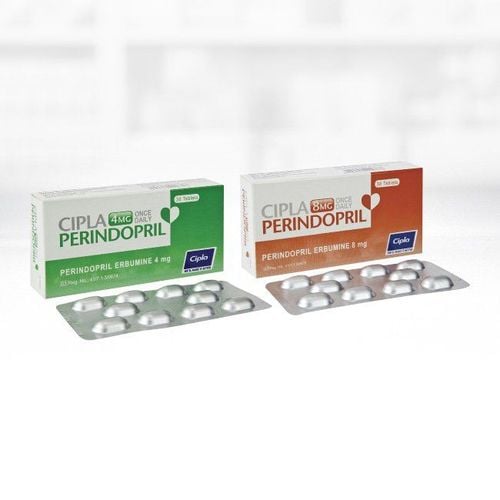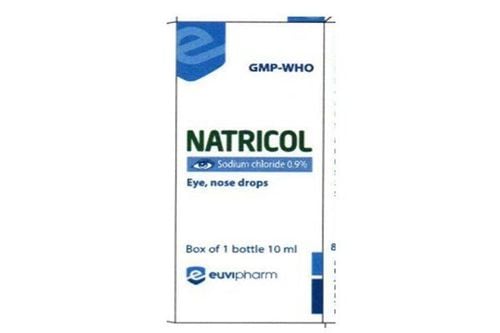This is an automatically translated article.
Eating too much salt can raise blood pressure, and high blood pressure increases the risk of metabolic cardiovascular disease. So to keep your heart healthy, it's important that you don't eat too much salt every day. Since we all spend more time at home, following a healthy diet can be a challenge. So you might be surprised to know how much salt you eat? Learn more about this in the article below.1. Is eating salt good?
Salt is an indispensable condiment in every family's meals. Not only contributing to the special flavor of dishes, salt also contains sodium - an extremely necessary mineral for the body. However, eating too much salt can lead to a number of serious health problems including medical conditions such as high blood pressure, metabolic heart disease.... So the question arises: how much salt is too much?According to recommendations from medical experts, adults should eat less than 6 grams of salt per day, equivalent to one teaspoon of salt. This amount of salt includes salt that is available in some foods such as bread and salt that is added during the processing and cooking of food. For children, the recommended amount of salt is less than adults, depending on age, specifically:
| Tuổi | Lượng muối tối đa / ngày | Lượng Natri tối đa / ngày |
| 1 – 3 tuổi | 2 g | 0,8 g |
| 4 – 6 tuổi | 3 g | 1,2 g |
| 7 – 10 tuổi | 5 g | 2 g |
| 11 tuổi trở lên | 6 g | 2,5 g |
| Người lớn | 6 g | 2,5 g |
Besides the amount of salt we can see visually when cooking in dishes, there is another concept that needs to be taken care of, which is the "hidden amount of salt". Most people know that foods like crisps or dry-roasted nuts are high in salt, but many people may be surprised at how much salt can be added to the diet by everyday foods. eat your own. About three-quarters of the salt we eat is added to the foods we eat before we buy them. As well as foods like soups and sauces in ready-to-eat meals, everyday foods like breads and breakfast cereals often have added salt. Because we eat these foods so often, the amount of salt they provide to the body can actually add up. The amount of salt will vary between brands and varieties, so checking food labels can help housewives make healthier choices for the whole family's diet.
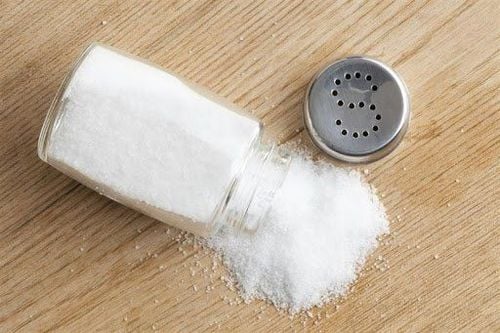
Bên cạnh lượng muối chúng ta có thể nhìn thấy trực quan khi tra nấu trong các món ăn, còn một khái niệm nữa cũng cần được quan tâm chính là “lượng muối ẩn”
2. You may be surprised how much salt you eat
Do you try to measure carefully the amount of salt in your diet? Are you sure you're eating the right amount of salt (also known as sodium chloride) each day, as most experts recommend? Even if you always pay attention to the amount of salt you and your family eat every day, housewives can still miscalculate the amount of salt. Even without using salt for cooking, we can still absorb a lot of sodium - especially if we eat processed foods or fast food. In fact, most of the sodium in people's daily diets comes from such foods, which are commonly found on supermarket shelves and in restaurant meals. That's why the U.S. Food and Drug Administration (FDA) is working to gradually reduce the amount of sodium added to foods.The U.S. Food and Drug Administration has released a draft guideline for industry to set voluntary goals for reducing sodium levels in processed and prepared foods as well as fast food. The goals focus on the amount of sodium added to their food by manufacturers and restaurants before reaching the consumer - not the salt that customers add themselves when cooking or at the table. The goal is to help consumers gradually reduce their daily sodium intake to 2,300 milligrams (mg) per day. That's about a teaspoon of salt, the daily intake recommended in the WHO dietary guidelines.
Today, Americans consume an average of 3,400 mg per day - nearly 50% more than the general recommendation. That is raising concerns about people's health problems. "It's not easy for consumers to get the recommended amount of sodium in their diet," said Dr. Susan Mayne, director of the FDA's Center for Applied Nutrition and Food Safety. “We want to help reduce sodium across the entire food supply by setting reasonable goals.” "There are very few interventions that can provide such a large overall benefit to public health," Mayne said.
The two words “sodium” and “salt” are often used interchangeably, but there is a difference between them. Salt used in meals or added during cooking is a crystalline compound (40% sodium and 60% chloride); whereas sodium is a mineral, one of the elements found in salt.
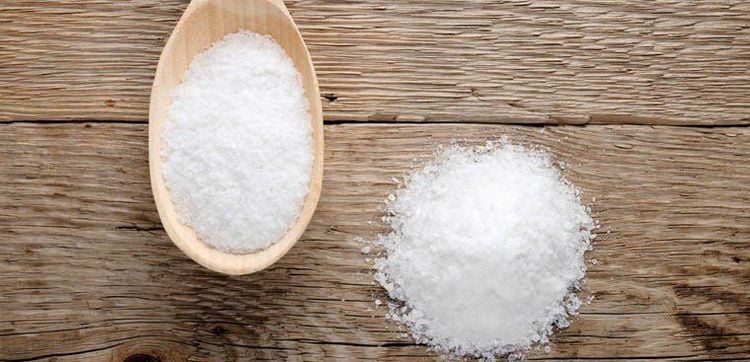
Hai từ “natri” và “muối” thường được sử dụng thay thế cho nhau, nhưng có một sự khác biệt giữa chúng
90% of American adults eat more sodium than is recommended. Meanwhile, children and adolescents are also eating too much sodium, ranging from 2,900 mg per day for children 6 to 10 years old, to 3,700 mg for teens 14 to 18 years old. The recommended upper limit for sodium consumption for children under 14 years of age is lower than the 2,300 mg limit recommended for adolescents and adults. The recommended upper limit for children is 2,200 mg per day for ages 9 to 13; 1,900 mg for ages 4 to 8; and 1,500 mg for ages 1 to 3. There is evidence that children who eat foods higher in sodium will continue to do so into adulthood. One in three Americans has high blood pressure, and among African Americans, that number rises to nearly 1.5 times.
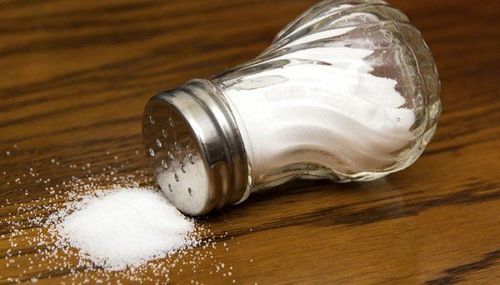
Muối là gia vị giúp cho natri được tiêu thụ thường xuyên nhất
3. Solutions to reduce salt consumption
The U.S. Food and Drug Administration is taking an approach to regulating sodium levels based on the progress made by the food industry. The agency has released draft targets for two and 10 years that will establish a system of measuring progress. Many products in the food delivery sector may already have met short-term draft targets.Widespread adoption of this draft has given it an estimate that could reduce sodium intake by 3,400 to 3,000 mg per day. The draft long-term goals aim to further reduce daily sodium intake to 2,300 mg per day. These targets are more difficult to meet for industry and may require innovation in the development of new product technologies and formulations. People usually won't notice small changes in sodium intake (about 10 to 15 percent) and over time taste buds get used to larger changes, especially if they are made slowly. So, the approach of the US Food and Drug Administration allows consumers to gradually get used to the taste of foods with less sodium.
“This is the most sensible approach to help people reduce their salt and sodium intake gradually.” Kasey Heintz, a biologist at the U.S. Food and Drug Administration's Office of Food Additive Safety, says sodium plays different roles, depending on the type of food and how each food will react. There are different ways to reduce sodium intake. In salad dressings, for example, the U.S. Food and Drug Administration found varying levels of sodium content among the best-selling and most likely to drop.
The U.S. Food and Drug Administration also sees potential from significantly cutting down on many snack foods, due to variations in sodium content on the market. "That's why the draft guidance document outlines targets for about 150 food subcategories within 16 major food categories that contribute to sodium intake," says Heintz. The U.S. Food and Drug Administration estimates that this strategy could result in annual benefits of $70 billion a year or more in improving health and longevity, as well as reducing or delaying medical expenses. The proposed criteria also apply to food prepared in restaurants and other food service establishments. That's because, according to the U.S. Department of Agriculture's Economic Research Service, nearly half of all food wages are spent on food consumed outside the home.
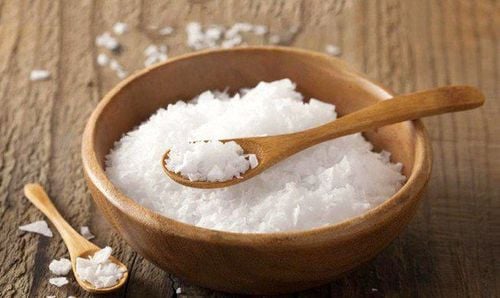
Muối có nhiều công dụng, đặc biệt là đối với hương vị các món ăn
Hope the above information has provided you with more options and answers on how much salt you eat. Wish you always have a scientific diet and improve your work productivity and improve your life.
Please dial HOTLINE for more information or register for an appointment HERE. Download MyVinmec app to make appointments faster and to manage your bookings easily.
References: fda.gov, bhf.org.uk




